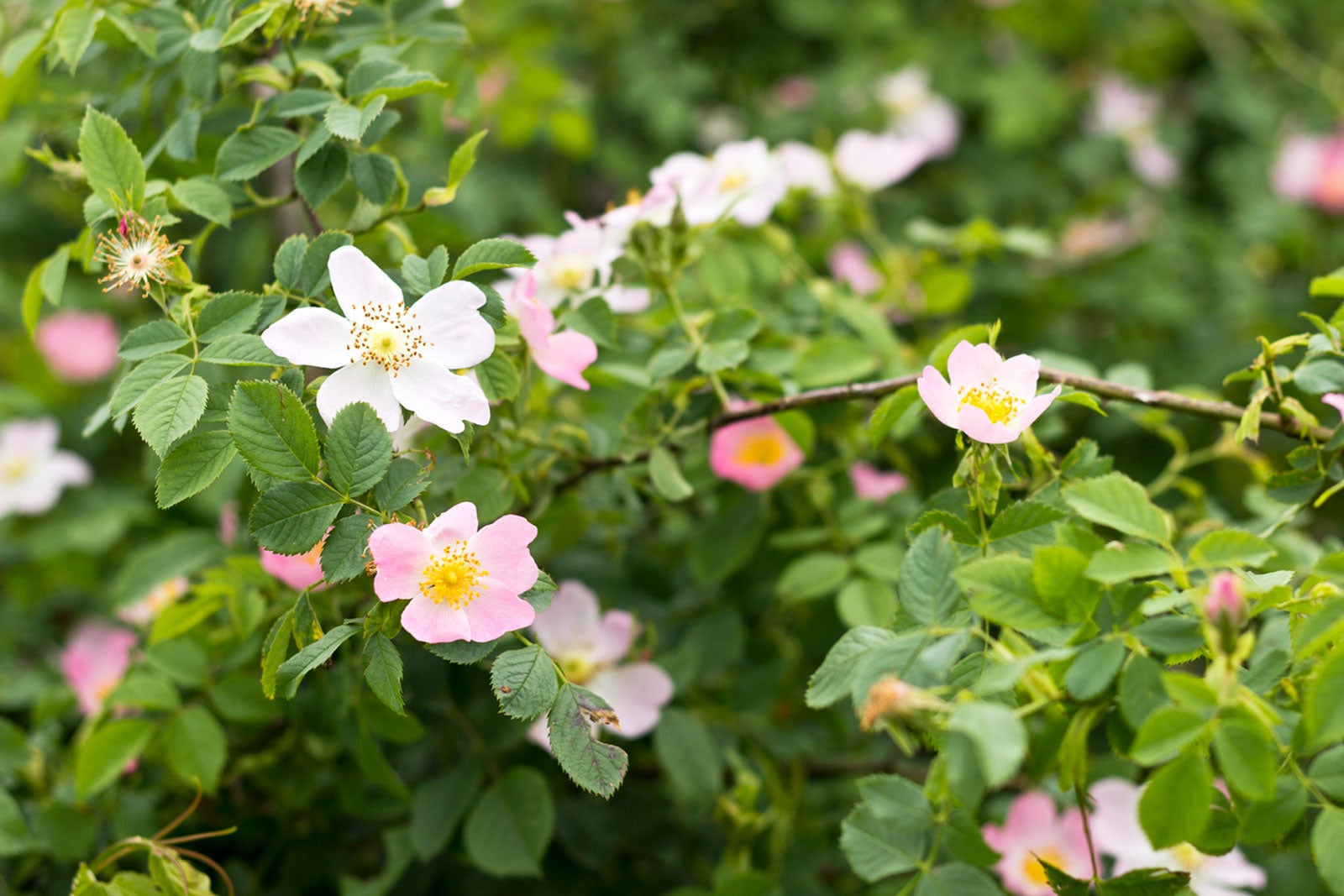Growing Wild Roses: How To Grow Wild Rose Plants


Wild roses tend to stir one's thoughts towards Medieval times of knights, kings, queens, princes, and princesses, as many of them date back well into our history. The botanical term for them is “Species Roses.” Though this term does not conjure up the same emotions, it is the classification where you will find them listed or placed for sale in rose catalogs and nurseries. Keep reading to learn more about the types of wild roses and how to grow them in the garden.
Where Wild Roses Grow
In order to grow wild rose plants properly, it helps to know more about them, including where wild roses grow. Species roses are naturally growing shrubs that occur in nature with no help at all from man. Wild species roses are single bloomers with five petals, almost all of them are pink with a few whites and reds, as well as a few that go towards the yellow coloration. Growing wild roses are all own root roses, which means they grow upon their own root systems without any grafting as is done by man to help some of the modern roses grow well in varying climatic conditions. In fact, wild roses are the roses from which all others we have today were bred, thus a special place they do hold in the mind and heart of any Rosarian. Species or wild roses tend to thrive on neglect and are exceptionally hardy. These tough roses will grow in just about any soil conditions, at least one of which is known to do very well in wet soil. These wonderful roses will produce beautiful rose hips that carry over into winter and provide food for the birds if left on the bushes. Since they are own root bushes, they can die way down in the winter and what comes up from the root will still be the same wonderful rose.
Growing Wild Roses
It isn't difficult to grow wild rose plants. Wild rosebushes can be planted just like any other rosebush and will do best in areas where they get plenty of sun and the soils are well drained (as a general rule). One variety that does well in wet ground, however, is named Rosa palustris, also known as the swamp rose. When growing wild roses in your rose beds, gardens or general landscape, do not crowd them. All types of wild roses need room to expand and grow into their natural states. Crowding them, like with other rosebushes, tends to cut down on air flow through and around the bushes which opens them up to disease problems.
Wild Rose Care
Once their root systems are established in their new homes, these tough rosebushes will thrive with a minimum of wild rose care. Deadheading (removal of old blooms) them really is not necessary and will cut down or eliminate the wonderful rose hips they produce. They can be pruned a bit to maintain a desired shape, again be careful how much of this you do if you want those beautiful rose hips later!
Types of Wild Roses
One of the wonderful wild roses found here in my home state of Colorado is named Rosa woodsii, which grows to 3 or 4 feet (91-120 cm.) tall. This variety has pretty pink, fragrant blooms and is listed as a drought resistant rosebush. You can find this growing happily throughout the mountains west of the United States. When deciding to add one or several of the species roses to your gardens, keep in mind that they do not bloom all season like many of the modern roses will. These roses will bloom in spring and early summer and then are done blooming as they begin setting those wonderful multi-use rose hips. To obtain a rosebush that is very close to its wild rose beginnings, look for an aptly named variety like “Nearly Wild.” This one offers the same beauty, charm, low maintenance, and toughness of a true wild rose but has the added magical kiss of repeat blooming. Part of the charm that wild roses carry is the common names that they have been given over their years of existence. Here are a few types of wild roses you may like to grow in the garden (the year listed is when the rose was first known in cultivation):
- Lady Banks Rose - Rosa banksiae lutea (1823)
- Pasture Rose - Rosa carolina (1826, Native American variety)
- Austrian Copper - Rosa foetida bicolor (before 1590)
- Sweetbriar or Shakespeare's Eglantine Rose - Rosa eglanteria (*1551)
- Prairie Rose - Rosa setigera (1810)
- Apothecary Rose, Red Rose of Lancaster - Rosa gallica officinalis (before 1600)
- Father Hugo, Golden Rose of China - Rosa hugonis (1899)
- Apple Rose - Rosa pomifera (1771)
- Memorial Rose - Rosa wichuraiana (1891)
- Nootka Rose - Rosa nutkana (1876)
- Wood's Wild Rose - Rosa woodsii (1820)
Sign up for the Gardening Know How newsletter today and receive a free copy of our e-book "How to Grow Delicious Tomatoes".

Stan V. Griep contributed to Gardening Know How for many years and has been a Colorado Native Rosarian for over four decades. He is an American Rose Society Certified Consulting Master Rosarian in the Rocky Mountain District, and a member of the Denver Rose Society, the Loveland Rose Society, and the American Rose Society. He is Gardening Know How's in-house expert on all things roses.